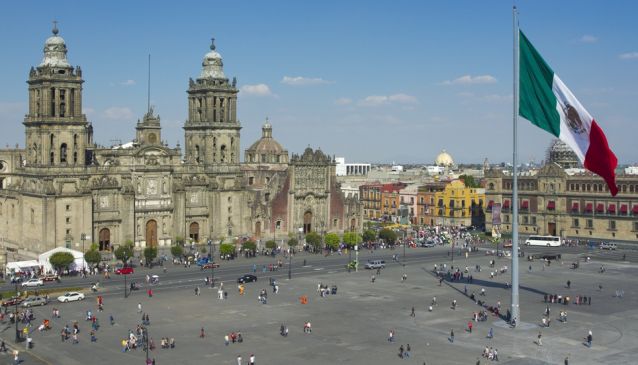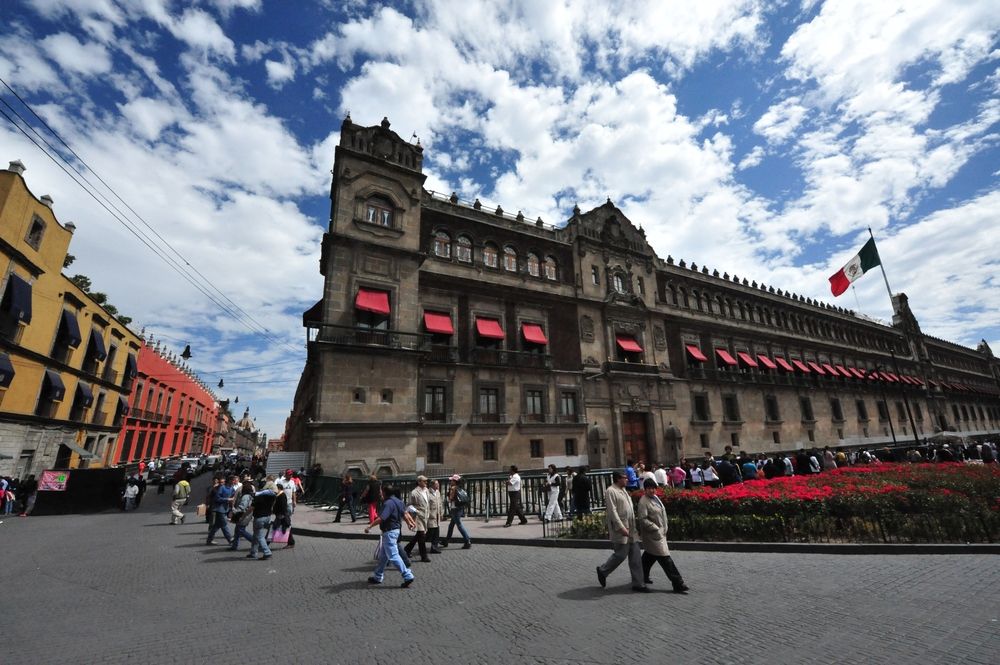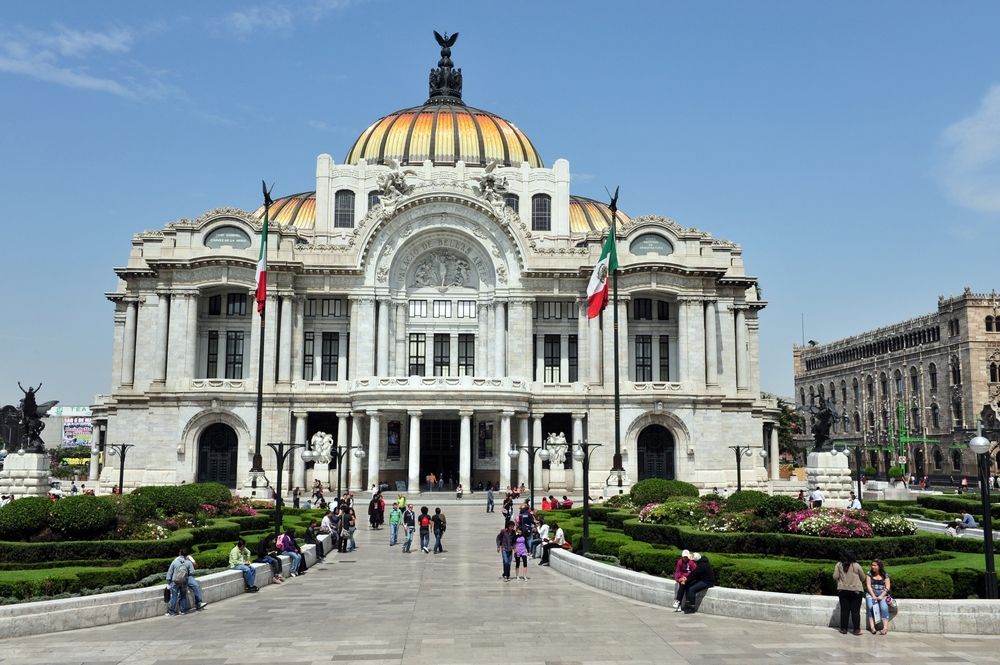Palatial buildings and ancient ruins in the heart of the city

When planning your visit to Mexico City, any resident or expert would recommend that you to start your sightseeing in what is considered the heart of the city, and is known as ‘The Zocalo’. Although the official name is ‘Plaza de la Constitución’ it is more well-known as Zocalo Square.
The Zocalo was once the main centre of the Aztec capital Tenochtitlan and within a few meters you will encounter pre-Hispanic ruins and majestic colonial buildings. We can proudly say that this Zocalo Square is among the largest in the world, measuring 220m from north to south and 240m from east to west.
This square plaza is also used for gathering people for civic and cultural events and our many celebrations throughout the year. It’s even been a stage for photo artist Spencer Tunick, who filled it with 18,000 nude Mexicans in May 2007 (a record for Tunick).

Festival parade
On the east side of the Zocalo you will find ‘Palacio Nacional’ (the presidential palace), on the north the ‘Catedral Metropolitana’, and on the south the city government offices. Many jewelry shops and extravagant hotels line the arcade known as the ‘Portal of Mercaderes’ on the plaza’s west side. The ceremonial center of Aztec Tenochtitlán, known as the ‘Teocalli’, lay immediately northeast of the Zócalo.
The ‘Palacio Nacional’ (National Palace) is another of the must-see tourist attractions in Mexico City. This beautiful colonial building is the very site where the palace of the Aztec ruler Moctezuma once stood. The walls above the main staircase in the second floor are covered with the famous murals by Diego Rivera, who pictures the history of Mexico from before the arrival of the Spanish conquerors through to modern times. This series of murals, entitled ‘México a través de los Siglos’ (Mexico through the Centuries) was painted between 1929 and 1951 and highlights the most dramatic moments of the nation's past. Other areas of the National Palace that are open to visitors include the treasury, historical presidents' quarters and a botanical garden.

National Palace
Just aside from the Palacio Nacional you will find the Metropolitan’s Cathedral, or ‘Catedral Metropolitana’, located north of the Zocalo, this building went through several construction phases. The varieties of architectural and artistic styles combine to create a fascinating testament of time. The cathedral is also home to fascinating colonial religious art and beautiful gilded altarpieces.
Outside the cathedral you may hear the booming of drums that come from the Aztec dancers. Wearing snakeskin loincloths, elaborately feathered headdresses and shell ankle bracelets, they move in a circle and chant in Náhuatl. These dancers are also known as Danzantes Aztecas, Chichimeca or Concheros, the dancers perform their ritual daily near the Templo Mayor which used to be the most important religious area for the Aztecs.
Templo Mayor was discovered under the Mexico City Metropolitan Cathedral, in the mid-1900s and was excavated in the 1970s. History tells that when the Spanish Conquerors arrived, they destroyed the temples and built over the Aztec empire and the great temple of Tenochtitlan. It is important to mention that this temple is still an active site; archeologists are continuously working in these structures. The historic complex of the Templo Mayor and its museum, are part of UNESCO’s World Heritage List.
Near the Templo Mayor you can find one of the most ancient buildings in the area which is now a hotel named the ‘Gran Hotel Ciudad de Mexico’; this remarkable building is located across the street from the southwest corner of the Zocalo, and it will be the perfect place for refreshment and a spectacular view of the Zocalo Square.
Just walking distance from the Zocalo you can find many other attractions. One of the most outstanding includes ‘The Palace of Iturbide’. This large palatial home was built by the Count of San Mateo Valparaíso in the 18th century as a wedding gift for his daughter. It gained the name ‘Palace of Iturbide’ because Agustín de Iturbide lived and accepted the crown as Mexico's first emperor there after independence from Spain. You will also find the ‘Torre Latinoamericana’ this is one of the best-known skyscrapers in Latin America. It was begun in 1948 and completed in 1956 and is 182 meters tall; this tower used to be the tallest in Mexico around the 60´s.

Palacio de Bellas Artes
Other attractions are the ‘Museo Nacional de Arte’; this museum houses a wonderful collection representing the history of Mexican art from the late pre-Hispanic era to the early 20th century. You don´t want to miss the ‘Palacio de Correos’ or (Postal Palace of Mexico City) also known as the ‘Correo Mayor’ this building refers the style of an Italian Renaissance palace. It was designed by Italian Adamo Boari, who also designed part of the ‘Palacio de Bellas Artes’ across the street, which is one of the most beautiful buildings in the city. You can find it just across the street from the Torre Mayor tower.
Our best recommendation to visit this unique and picturesque area would be to arrive in the early morning when you can either take the subway or the Turibus which is a tourism bus that runs around the major attractions of the city.
Wear your most comfortable walking shoes, and don´t forget your camera.